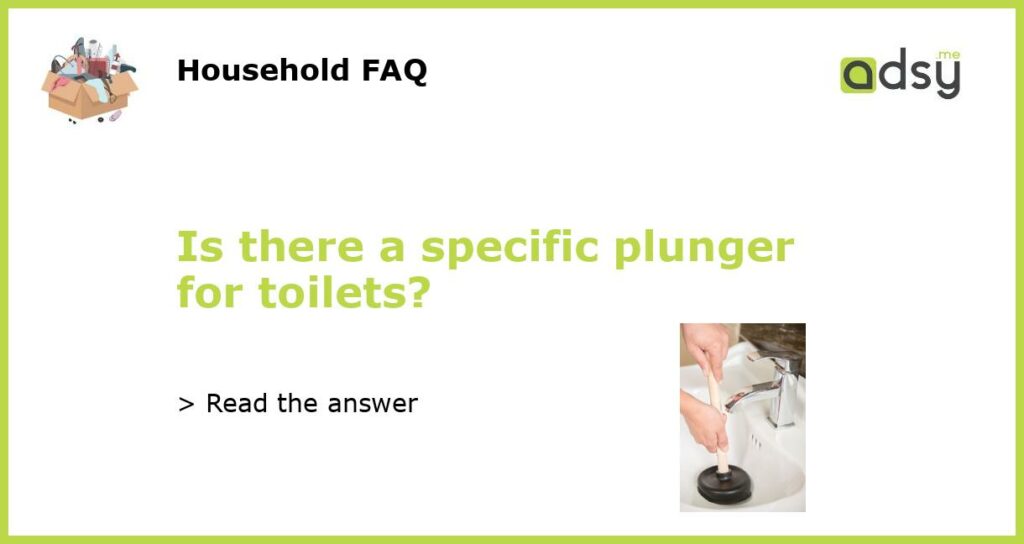Understanding the Importance of Using the Right Plunger
When it comes to plunging a toilet, many people mistakenly believe that any plunger will do the job. However, this is not the case. Using the wrong plunger can not only be less effective but can also potentially cause damage to your toilet. Therefore, it is important to understand the specific type of plunger that is designed for toilets.
The Different Types of Plungers
There are two main types of plungers available: the cup plunger and the flange plunger. The cup plunger, also known as a sink plunger, is the one commonly found in most households. It has a flat rubber cup at the end of a wooden or plastic handle. This type of plunger is designed for use on flat surfaces, such as sinks or bathtubs, and is not ideal for toilets.
The flange plunger, on the other hand, is specifically designed for toilets. It has an additional piece called a flange, which is a soft rubber sleeve that extends from the bottom of the cup. The flange creates a seal around the drain opening, helping to generate the necessary suction to clear the clog. This type of plunger is more effective for unclogging toilets because it can create a tighter seal.
The Importance of Using a Toilet-Specific Plunger
Using a plunger that is specifically designed for toilets is important for several reasons. Firstly, a toilet plunger will have a longer handle compared to a sink plunger, making it easier to reach the drain opening in the toilet bowl. This longer handle also allows you to apply more force when plunging, increasing the likelihood of unclogging the toilet.
Secondly, the flange on a toilet plunger helps create a better seal around the drain opening. This seal is crucial for generating the suction necessary to dislodge the clog. Without a proper seal, you may find that your plunging efforts are less effective, resulting in a prolonged and frustrating unclogging process.
Lastly, using a toilet plunger helps prevent potential damage to your toilet. Sink plungers do not have a flange, which means that they may not create a proper seal and can cause water to splash back. This can lead to a messy clean-up and potential water damage to your bathroom floor. Using a toilet-specific plunger reduces the risk of water splashing out and helps protect your bathroom from unnecessary damage.
How to Use a Toilet Plunger Properly
Now that you understand the importance of using a toilet plunger, it is essential to know how to use it correctly. Here is a step-by-step guide:
1. Ensure that the toilet bowl has enough water to cover the rubber cup of the plunger.
2. Place the plunger into the toilet bowl, ensuring that the flange is inserted into the drain opening.
3. Use the plunger’s handle to push the cup down firmly against the drain opening.
4. Begin plunging by pushing and pulling the plunger vigorously, creating suction and pressure to dislodge the clog.
5. Repeat the plunging motion several times until the clog is cleared.
6. Flush the toilet to ensure that the water drains properly.
Additional Tips for Effective Plunging
While using a toilet plunger is generally effective in unclogging toilets, here are some additional tips that can help improve your plunging success:
– If the plunger is not creating a sufficient seal around the drain opening, try adding petroleum jelly to the rim of the plunger cup. This can help create a tighter seal.
– Be patient and persistent. It may take several attempts to successfully clear a stubborn clog.
– If plunging does not work, it may be a sign of a more serious plumbing issue. In such cases, it is best to consult a professional plumber for assistance.
By understanding the importance of using a specific plunger for toilets and following proper plunging techniques, you can effectively unclog your toilet and prevent any potential damage. Remember to always have a flange plunger on hand for your bathroom emergencies.






